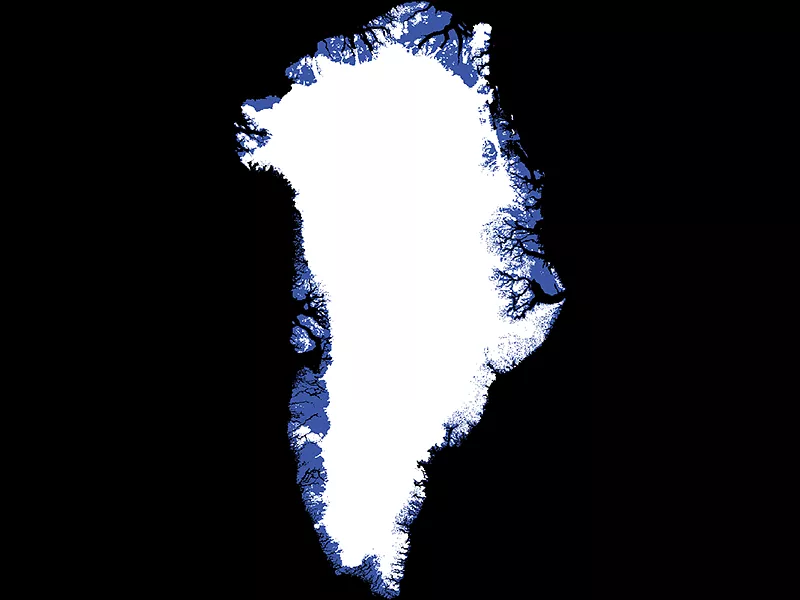
MEaSUREs Greenland Ice Mapping Project (GIMP) Land Ice and Ocean Classification Mask, Version 1
Data set id:
NSIDC-0714
DOI: 10.5067/B8X58MQBFUPA
This is the most recent version of these data.
Version Summary
Version Summary
Initial release
Overview
This data set, part of the NASA Making Earth System Data Records for Use in Research Environments (MEaSUREs) program, provides a complete land ice and ocean classification mask for the Greenland ice sheet, that was mapped using a combination of USGS Landsat 7 ETM+ panchromatic band imagery, and the Canadian Space Agency's (CSA) RADARSAT-1 Synthetic Aperture Radar (SAR) amplitude images.
See Greenland Ice Mapping Project (GIMP) for related data.
Parameter(s):
LAND ICE/OCEAN CLASSIFICATION
Platform(s):
LANDSAT-7, LANDSAT-8, RADARSAT-1
Sensor(s):
ETM+, OLI, SAR
Data Format(s):
GeoTIFF
Temporal Coverage:
1 July 1999 to 30 September 2002
15 January 2013 to 30 September 2015
15 January 2013 to 30 September 2015
Temporal Resolution:
- Not applicable
Spatial Resolution:
- 15 m
- 30 m
- 90 m
- 15 m
- 30 m
- 90 m
Spatial Reference System(s):
WGS 84 / NSIDC Sea Ice Polar Stereographic North
EPSG:3413
Spatial Coverage:
N:
82
S:
58
E:
7
W:
-90
Blue outlined yellow areas on the map below indicate the spatial coverage for this data set.
Data Access & Tools
A free NASA Earthdata Login account is required to access these data. Learn More
Sample Data Image
Image

This land ice and ocean classification map of Greenland indicates land-based ice (white), below-sea-level land (blue), and ocean (black). Credit: NASA MEaSUREs GrIMP Data: USGS, CSA
Documentation
Help Articles
How to Articles
Many NSIDC DAAC data sets can be accessed using the NSIDC DAAC's Data Access Tool. This tool provides the ability to search and filter data with spatial and temporal constraints using a map-based interface.Users have the option to
Below the image in this article, you will find sample code in IDL, MATLAB, and Python to read in a GeoTIFF file, extract the metadata, and create an image.
The code has been tested with the following data products:
We recommend using the Geospatial Data Abstraction Library (GDAL) to convert GeoTIFF files into a different format.
We recommend using the Geospatial Data Abstraction Library (GDAL) or a GIS to reproject geoTIFF files.
All data from the NASA National Snow and Ice Data Center Distributed Active Archive Center (NSIDC DAAC) is directly accessible through our HTTPS file system using Wget or curl. This article provides basic command line instructions for accessing data using this method.